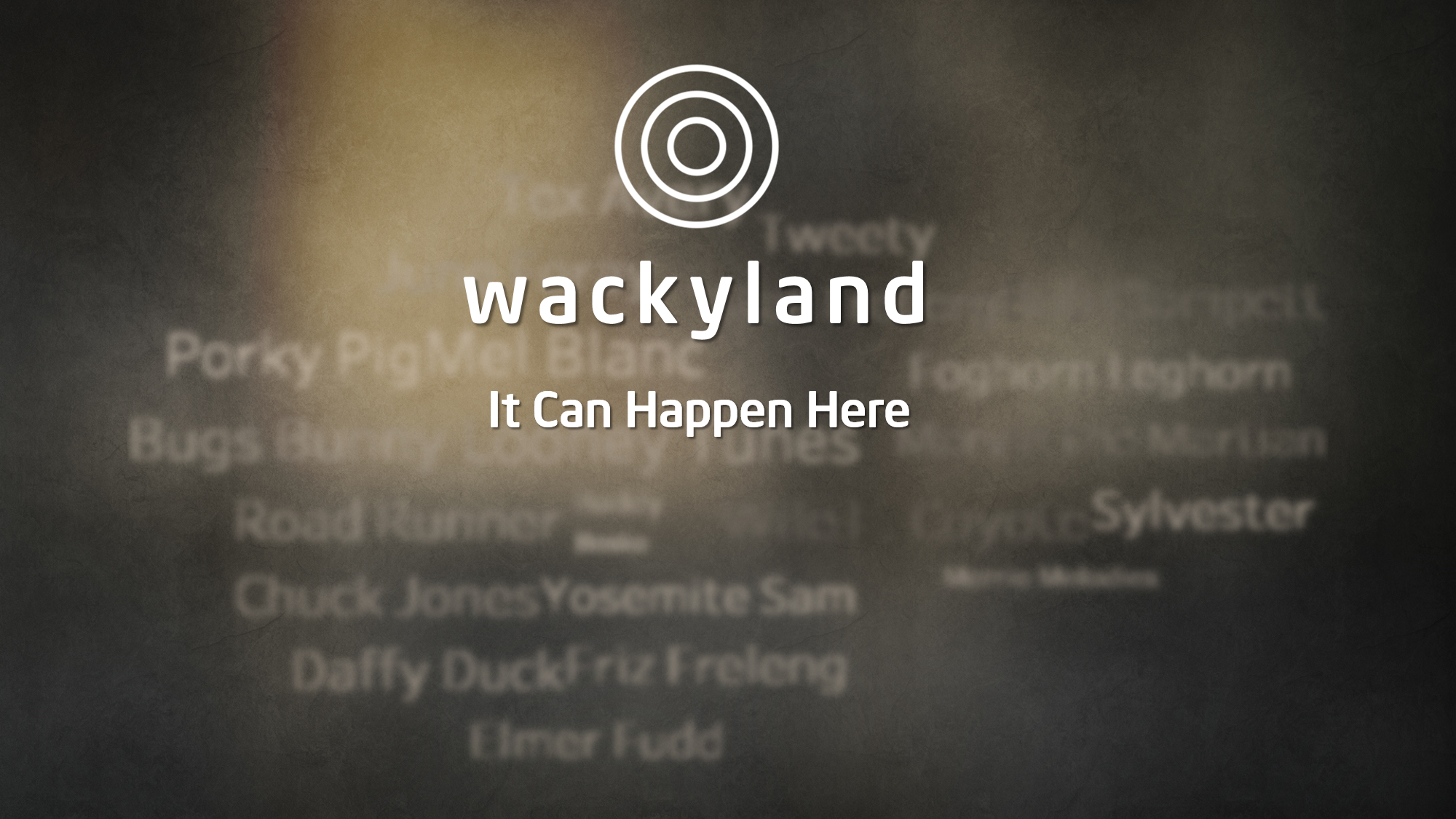“Mama, Baby, Dad!”
 Directed by Robert Clampett; Story by Lou Lilly; Animation by Robert McKimson; Voice Characterization by Mel Blanc; Musical Direction by Carl W. Stalling. Released in 1944
Directed by Robert Clampett; Story by Lou Lilly; Animation by Robert McKimson; Voice Characterization by Mel Blanc; Musical Direction by Carl W. Stalling. Released in 1944
Besides the titular hare, this short stars a dog who looks like Willoughby with a haircut. He’s Russian. (It’s a reference to a character on the “Eddie Cantor” radio program) While sniffing around for a rabbit, he rather abruptly runs into Bugs. Bugs claims to have not seen any rabbits, but this dog isn’t as dumb as Red Hot Ryder and gives chase shortly thereafter. He chases Bugs into a lake. And I’m not kidding, the rest of the short takes place underwater. I guess a friend of Clampett’s really had a fetish for characters being underwater and Clampett was too good of a friend to suggest he go get help. Of course, being underwater makes for a perfect excuse to have Bugs dress up as a mermaid. (So maybe that’s the whole reason it’s underwater. I don’t really care though. This is Clampett! I’ve accepted stranger things than this from him.) The dog (who shall be called Vladimir. It’s my blog and I’ll be as uncreative as I want.) falls for the get up and hits on “her.” Agreeing to play games, they start up a round of tag. Bugs uses his tail-fin to slap the dog around. He removes his disguise, which wasn’t the best time since Vladimir immediately catches on and declares he is having a rabbit sandwich for dinner. Happy to oblige, Bugs plays waiter. Unfortunately, they’re out of rabbit. (No rabbit in a lake? I’m shocked.) Masquerading as Fudd he tells the dog he’s going to get him a wabbit. Vladimir once more catches on sooner than most would against Bugs. He demands his sandwich and Bugs crawls between the (I guess waterproof) bread and lettuce. But he lets us know that he will be scrunched up. Vladimir doesn’t know this and feels guilty for killing Bugs. He cries and wishes for himself to be dead. There’s two ways this scene plays out: Bugs gives the dog a gun who shoots himself, and the director’s cut where Bugs shoots the dog himself. (I don’t like that. It seems too out of character for Bugs) With the danger gone, Bugs leaves. Vladimir stops the iris out to deliver one more line before he goes: “This shouldn’t even happen to a dog!” (The same line would be spoken by another animated dog in his first appearance: “Courage the cowardly dog.” And he got a whole series! Poor Vladimir only got a cameo in “Back in Action” after this.)
Personal Rating: 3

 Such a cute statue!
Such a cute statue! Directed by Robert Clampett (uncredited); Animation by Manny Gould, Don Williams, Rod Scribner and I. Ellis; Layouts and Backgrounds by Thomas McKimson and Philip DeGuard; Musical Direction by Carl W. Stalling. Released in 1946
Directed by Robert Clampett (uncredited); Animation by Manny Gould, Don Williams, Rod Scribner and I. Ellis; Layouts and Backgrounds by Thomas McKimson and Philip DeGuard; Musical Direction by Carl W. Stalling. Released in 1946 Supervision by Fred Avery; Story by Dave Monahan; Animation by Charles McKimson; Musical Direction by Carl W. Stalling. Released in 1940. Technical Advisor; Mother Goose.
Supervision by Fred Avery; Story by Dave Monahan; Animation by Charles McKimson; Musical Direction by Carl W. Stalling. Released in 1940. Technical Advisor; Mother Goose. Directed by Friz Freleng; Story by Warren Foster; Animation by Virgil Ross, Gerry Chiniquy, and Art Dabis; Layouts by Hawley Pratt; Film Editor: Treg brown; Voice Characterization by Mel Blanc. (Uncredited: June Foray); Musical Direction by Milt Franklyn. Released in 1957.
Directed by Friz Freleng; Story by Warren Foster; Animation by Virgil Ross, Gerry Chiniquy, and Art Dabis; Layouts by Hawley Pratt; Film Editor: Treg brown; Voice Characterization by Mel Blanc. (Uncredited: June Foray); Musical Direction by Milt Franklyn. Released in 1957. Supervision by Charles M. Jones; Story by Rich Hogan; Animation by Robert Cannon; Musical Direction by Carl W. Stalling. Released in 1940
Supervision by Charles M. Jones; Story by Rich Hogan; Animation by Robert Cannon; Musical Direction by Carl W. Stalling. Released in 1940 Directed by Robert McKimson; Story by Tedd Pierce; Animation by Phil DeLara, Charles McKimson, Herman Cohen, and Rod Scribner; Layouts by Peter Alvarado; Backgrounds by Richard H. Thomas; Voice Characterization by Mel Blanc; Musical Direction by Carl W. Stalling. Released in 1952
Directed by Robert McKimson; Story by Tedd Pierce; Animation by Phil DeLara, Charles McKimson, Herman Cohen, and Rod Scribner; Layouts by Peter Alvarado; Backgrounds by Richard H. Thomas; Voice Characterization by Mel Blanc; Musical Direction by Carl W. Stalling. Released in 1952 Supervision by I. Freleng; Story by Michael Maltese; Animation by Richard Bickenbach; Musical Direction by Carl W. Stalling. Released in 1941
Supervision by I. Freleng; Story by Michael Maltese; Animation by Richard Bickenbach; Musical Direction by Carl W. Stalling. Released in 1941 Supervision by Fred Avery; Story by Cal Howard; Animation by Irven Spence; Musical Direction by Carl W. Stalling. Released in 1937 (You know, I always questioned the “riding” part of the title)
Supervision by Fred Avery; Story by Cal Howard; Animation by Irven Spence; Musical Direction by Carl W. Stalling. Released in 1937 (You know, I always questioned the “riding” part of the title)